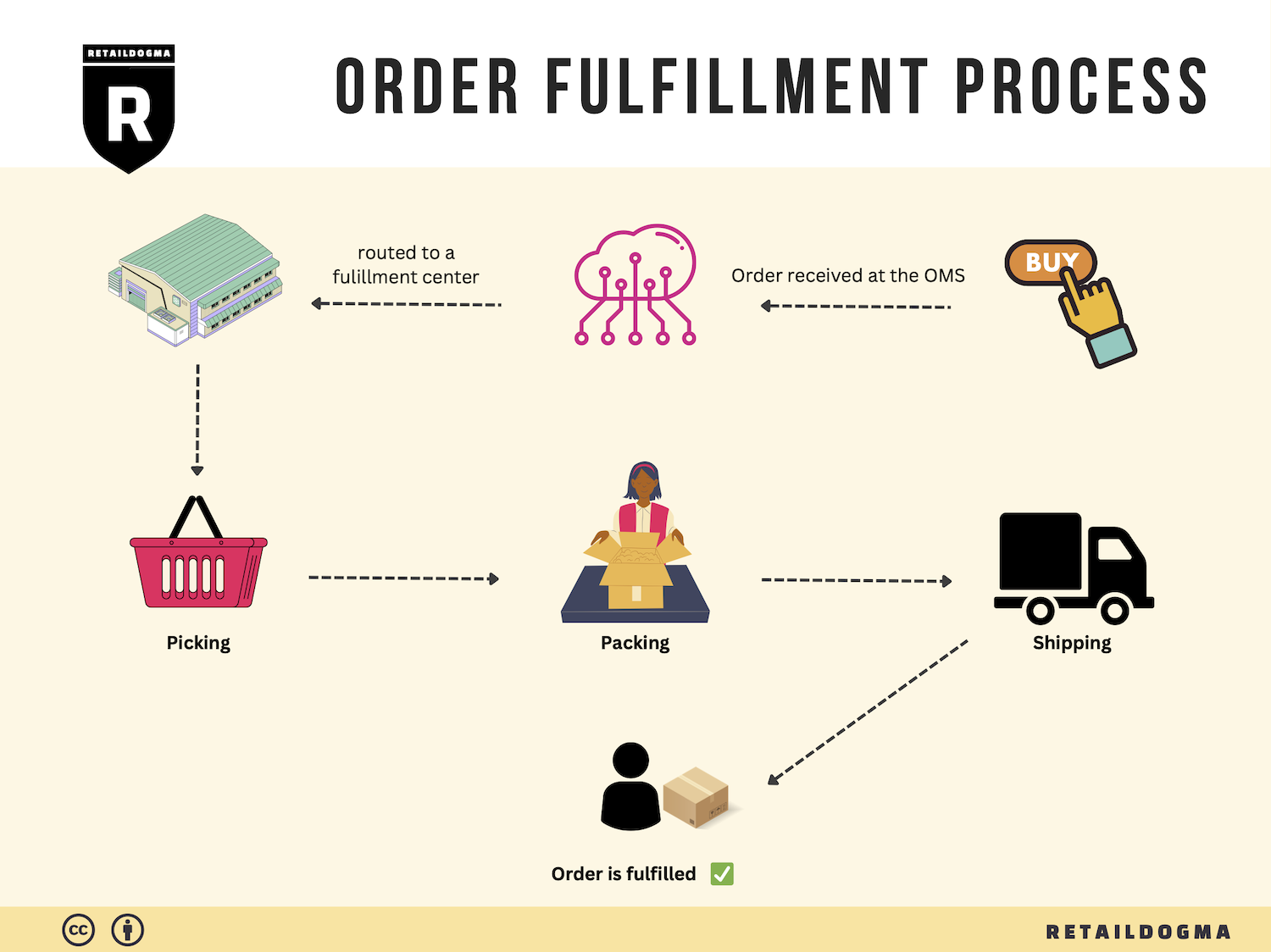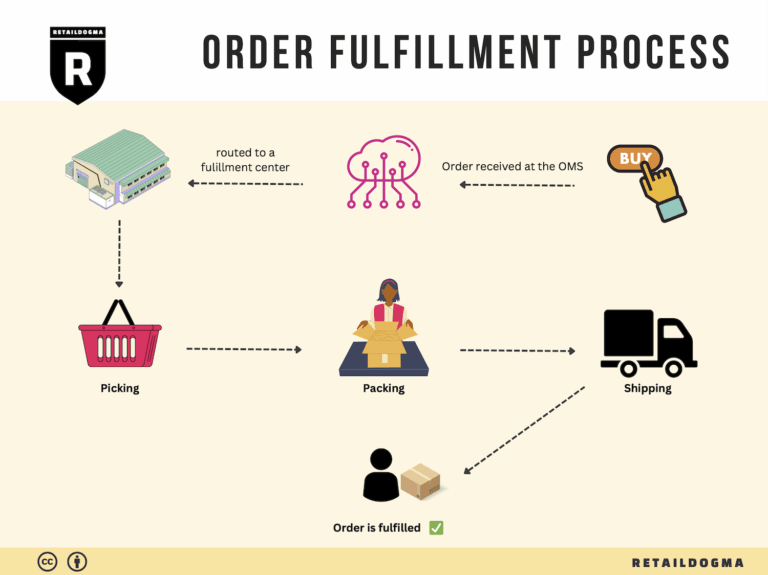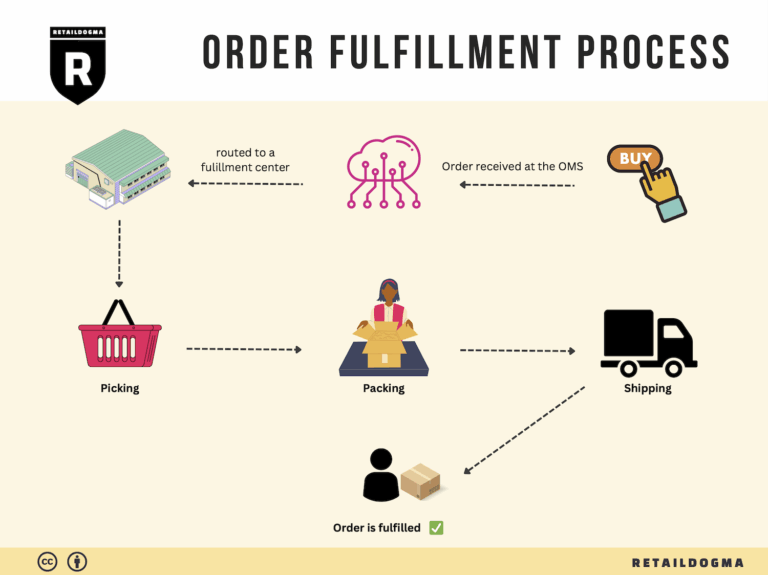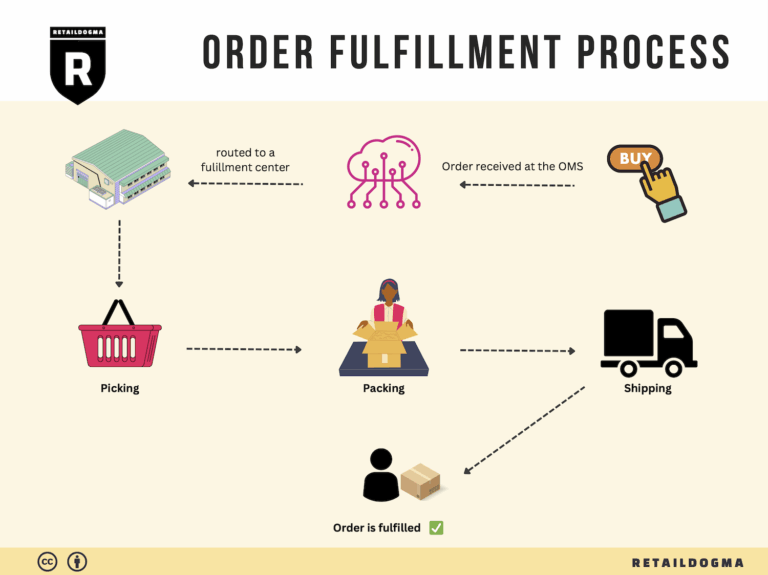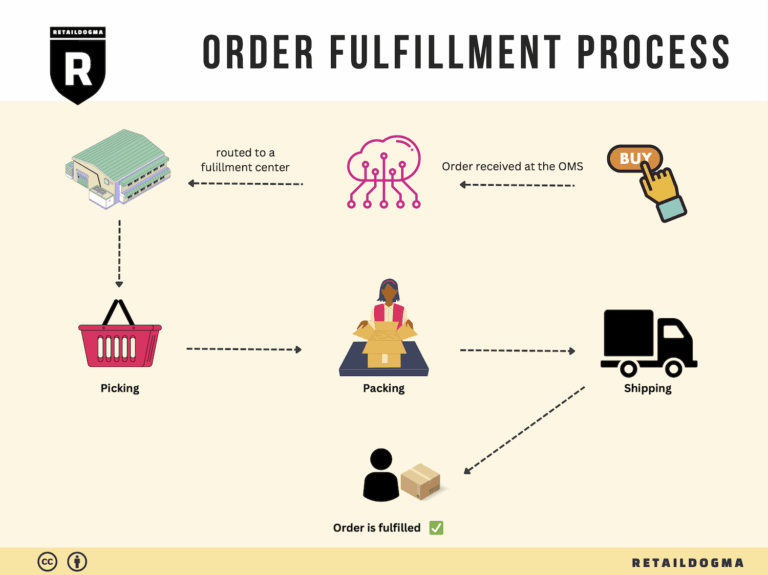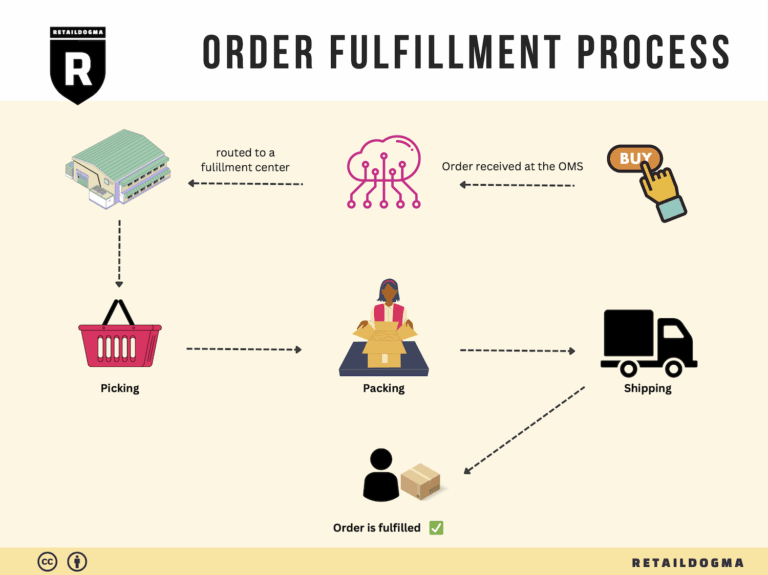How Order Fulfillment Works: A Step-by-Step Guide for Businesses
What is E-commerce Fulfillment? An Introduction for Growing Businesses
Understanding the Challenges of E-commerce Fulfillment
As an e-commerce business owner, you may find yourself overwhelmed by the complexities of packing and shipping orders. The excitement of growing sales often comes with the burden of logistics—managing inventory, ensuring timely deliveries, and meeting customer expectations can quickly become a daunting task. This is where e-commerce fulfillment steps in.
Fulfillment is simply the process of getting a product from your warehouse to your customer’s doorstep. It encompasses everything from receiving inventory and storing it, to picking, packing, and shipping orders. For many growing businesses, finding an efficient and scalable fulfillment strategy is crucial to sustaining growth and enhancing customer satisfaction.
What This Guide Covers
In this comprehensive guide, we will explore various fulfillment models available to e-commerce businesses. You’ll learn about the differences between third-party logistics (3PL) providers and Fulfilled by Amazon (FBA), two popular options that can help you streamline your operations. Each model has its own set of advantages and considerations, and understanding them will help you make informed decisions.
Additionally, we will delve into the core services that fulfillment centers typically offer, such as inventory management, order processing, and returns handling. These services can significantly reduce the operational burden on your team, allowing you to focus on growing your business instead of getting lost in logistics.
Choosing the right fulfillment partner is a pivotal step in your scaling journey. We will provide practical advice on what to look for when selecting a fulfillment provider, including factors like location, technology capabilities, and customer service.
Pricing is another critical aspect of fulfillment that can impact your bottom line. We’ll break down the common pricing structures and hidden costs associated with different fulfillment options, empowering you to evaluate what works best for your budget.
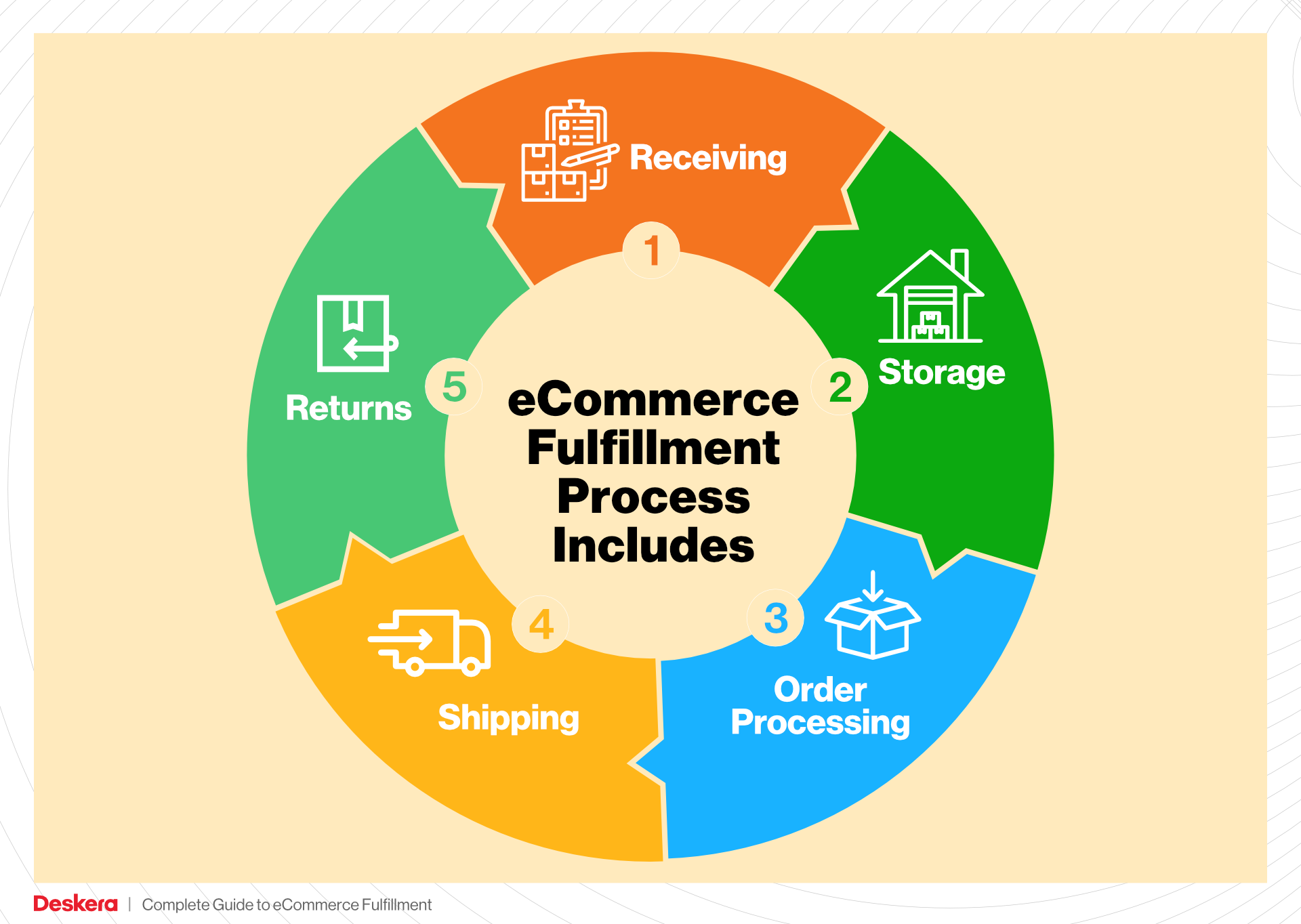
Empowering Smart Logistics Decisions
Our goal with this guide is to empower you to make smart decisions about your logistics strategy. By understanding the intricacies of e-commerce fulfillment, you can choose the right model and partner, ensuring that your operations are efficient, scalable, and aligned with your business goals. With the right fulfillment strategy in place, you can enhance customer satisfaction, reduce operational headaches, and position your business for sustained growth in the competitive e-commerce landscape.
What You’ll Learn In This Guide
- What is E-commerce Fulfillment? An Introduction for Growing Businesses
- The Order Fulfillment Process: From ‘Buy’ Button to Customer’s Door
- Comparing Fulfillment Models: In-House vs. 3PL vs. Dropshipping
- A Deep Dive into Amazon FBA: Pros, Cons, and Who It’s For
- Core Services Offered by Fulfillment Centers
- How to Choose a Fulfillment Partner: A 6-Point Checklist
- Understanding Fulfillment Pricing: A Breakdown of Common Fees
- Frequently Asked Questions (FAQs) about Fulfillment
- Conclusion: Is Outsourcing Fulfillment the Right Move for Your Business?
- Important Disclaimer
The Order Fulfillment Process: From ‘Buy’ Button to Customer’s Door
1. Receiving Inventory
The order fulfillment process begins with the receiving inventory phase. When products arrive at the fulfillment center, they must be checked for accuracy and quality. This involves verifying that the correct quantities and types of items have been delivered as per the purchase order. Each item is typically assigned a Stock Keeping Unit (SKU), which serves as a unique identifier for tracking inventory levels and sales.
This step is crucial because discrepancies in receiving can lead to inventory shortages or excesses, affecting future order fulfillment and customer satisfaction. Efficient inventory receiving ensures that products are accounted for and ready for the next stage of the process. Utilizing advanced systems for scanning and recording SKUs can streamline this process, reducing human error and speeding up the time it takes to get products into the warehouse.
2. Warehouse Storage
Once inventory has been received, the next step is warehouse storage. Products are organized and placed in designated storage areas within the fulfillment center. Effective warehouse management involves using systems such as bin locations or shelf labels to optimize space and facilitate easier access to items.
Proper storage is vital for maintaining an organized inventory, which in turn impacts the efficiency of subsequent fulfillment processes. By strategically positioning high-demand items closer to the packing and shipping areas, businesses can minimize the time it takes for order picking. Additionally, employing warehouse management software can enhance tracking and improve inventory accuracy, ensuring that items are easy to locate when orders are placed.
3. Order Picking
The order picking phase is where the actual selection of products for customer orders occurs. When an order is placed, a pick list is generated, detailing the items and quantities that need to be collected from storage. Employees or robots then retrieve these items, following the most efficient routes through the warehouse.
This step is critical because the accuracy and speed of order picking directly influence fulfillment speed and customer satisfaction. Errors in picking can lead to incorrect shipments, resulting in returns and customer complaints. Implementing technologies such as pick-to-light systems or automated guided vehicles (AGVs) can greatly enhance picking efficiency, ensuring that orders are filled accurately and promptly.
4. Order Packing
After items have been picked, they enter the order packing stage. During this phase, the products are carefully packed into shipping boxes. This involves checking the items against the original order to confirm accuracy, as well as selecting appropriate packing materials to protect the products during transit.
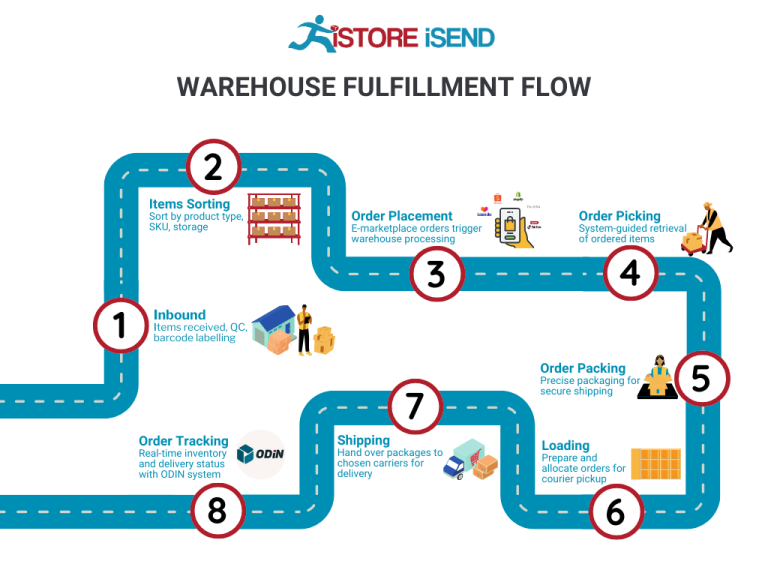
Packing is a crucial aspect of the fulfillment process, as it not only affects the condition of items upon arrival but also impacts shipping costs. Efficient packing processes can reduce dimensional weight charges by minimizing the size of packages. Utilizing packing software can assist in determining the best packing methods and materials, leading to cost savings and improved customer experience through better presentation and protection of products.
5. Shipping & Delivery
The final step in the order fulfillment process is shipping and delivery. Once an order is packed, it is labeled and prepared for shipment. This involves selecting the appropriate carrier based on factors such as delivery speed, cost, and reliability. The shipment is then handed over to the carrier for delivery to the customer’s specified address.
This stage is vital because it represents the culmination of the fulfillment process. Timely and accurate shipping is key to maintaining customer satisfaction and loyalty. Companies often use tracking systems to provide real-time updates to customers regarding their order status, enhancing transparency and trust. By analyzing shipping data, businesses can continually optimize their logistics strategies, ensuring that they meet customer expectations while managing costs effectively.
In conclusion, understanding each step of the order fulfillment process—from receiving inventory to shipping and delivery—enables e-commerce businesses to streamline operations, enhance customer satisfaction, and ultimately scale their logistics capabilities. By investing in technology and adopting best practices, businesses can navigate the complexities of fulfillment and position themselves for growth in the competitive e-commerce landscape.
Comparing Fulfillment Models: In-House vs. 3PL vs. Dropshipping
Fulfillment Model Comparison Table
| Model | Who Handles Inventory | Best For (Business Stage) | Key Advantage | Key Disadvantage |
|---|---|---|---|---|
| In-House Fulfillment | The business itself | Established businesses | Greater control over inventory & quality | High overhead costs |
| Third-Party Logistics (3PL) | A third-party provider | Growing businesses | Scalability and reduced operational burden | Less control over operations |
| Dropshipping | Supplier | Startups & small businesses | Low upfront investment & risk | Lower profit margins |
In-House Fulfillment
In-house fulfillment involves a company managing its own inventory and order processing operations. This model is often favored by established businesses that have the resources to invest in warehousing, staffing, and logistics management. By handling inventory directly, businesses maintain complete control over product quality, packaging, and shipping processes. This control can enhance customer satisfaction and brand loyalty, as companies can ensure that their products are presented and delivered according to their standards. However, the key disadvantage of in-house fulfillment is the high overhead costs associated with maintaining warehousing facilities and staffing. Businesses must invest in infrastructure, technology, and human resources, which can strain budgets, particularly for smaller operations. Furthermore, as order volumes fluctuate, companies may struggle with scalability, necessitating a careful balance between capacity and demand.
Third-Party Logistics (3PL)
Third-party logistics (3PL) providers are specialized companies that handle warehousing, inventory management, and shipping for e-commerce businesses. This model is particularly beneficial for growing companies that wish to scale without the burden of managing logistics in-house. By outsourcing these functions, businesses can focus on their core competencies, such as marketing and product development. 3PLs often have established networks and economies of scale, which can lead to reduced shipping costs and faster delivery times. Additionally, they offer flexibility, allowing businesses to adjust their logistics strategy based on seasonal demand or market changes. However, the main drawback of using a 3PL is the loss of direct control over inventory and fulfillment processes. Businesses may face challenges in maintaining quality standards and communication, especially if the 3PL does not align with the company’s operational goals.
Dropshipping
Dropshipping is a fulfillment model in which a retailer sells products without holding inventory. Instead, when a customer places an order, the retailer purchases the item from a third-party supplier who ships it directly to the customer. This model is particularly appealing for startups and small businesses, as it requires minimal upfront investment and allows for a wide product range without the financial risk associated with unsold inventory. It enables entrepreneurs to test new products and markets with relative ease. However, dropshipping comes with its own set of challenges. The primary disadvantage is the lower profit margins typically associated with this model, as retailers often pay wholesale prices to suppliers while selling at retail prices. Additionally, reliance on suppliers for inventory and fulfillment can lead to issues such as stockouts, shipping delays, and quality control problems, which can ultimately harm customer satisfaction and brand reputation.
Conclusion
Choosing the right fulfillment model is critical for e-commerce businesses aiming to scale effectively. In-house fulfillment offers control but comes with significant costs. 3PL providers facilitate growth and scalability but can reduce operational control. Dropshipping presents a low-risk entry point for new businesses but at the expense of profit margins and potential quality issues. Each model has its unique advantages and disadvantages, and the best choice will depend on the specific needs, resources, and long-term goals of the business. As the e-commerce landscape continues to evolve, understanding these fulfillment models will empower business owners to make informed decisions that align with their operational strategies and customer expectations.
A Deep Dive into Amazon FBA: Pros, Cons, and Who It’s For
Understanding Fulfillment by Amazon (FBA)
Fulfillment by Amazon (FBA) is a service that allows e-commerce sellers to store their products in Amazon’s fulfillment centers. Amazon takes care of storage, packaging, and shipping, as well as customer service and returns for these products. This service enables sellers to leverage Amazon’s extensive logistics network and customer base, potentially increasing their sales and operational efficiency.
How FBA Works
-
Product Listing: Sellers create product listings on Amazon and choose FBA as their fulfillment method.
-
Inventory Shipment: Sellers ship their products to Amazon’s fulfillment centers. Amazon has numerous facilities worldwide, including the recently opened ORH3 logistics center in Charlton, Massachusetts, which plays a crucial role in Amazon’s logistics strategy.
-
Storage and Management: Once the products arrive at the fulfillment center, Amazon stores them. The inventory is managed through Amazon’s sophisticated warehouse management systems, which utilize robotics and advanced technology for efficient handling.
-
Order Fulfillment: When a customer places an order for a product that is fulfilled by Amazon, the order is picked, packed, and shipped by Amazon staff. This process is typically very fast, often resulting in same-day or next-day delivery for Prime members.
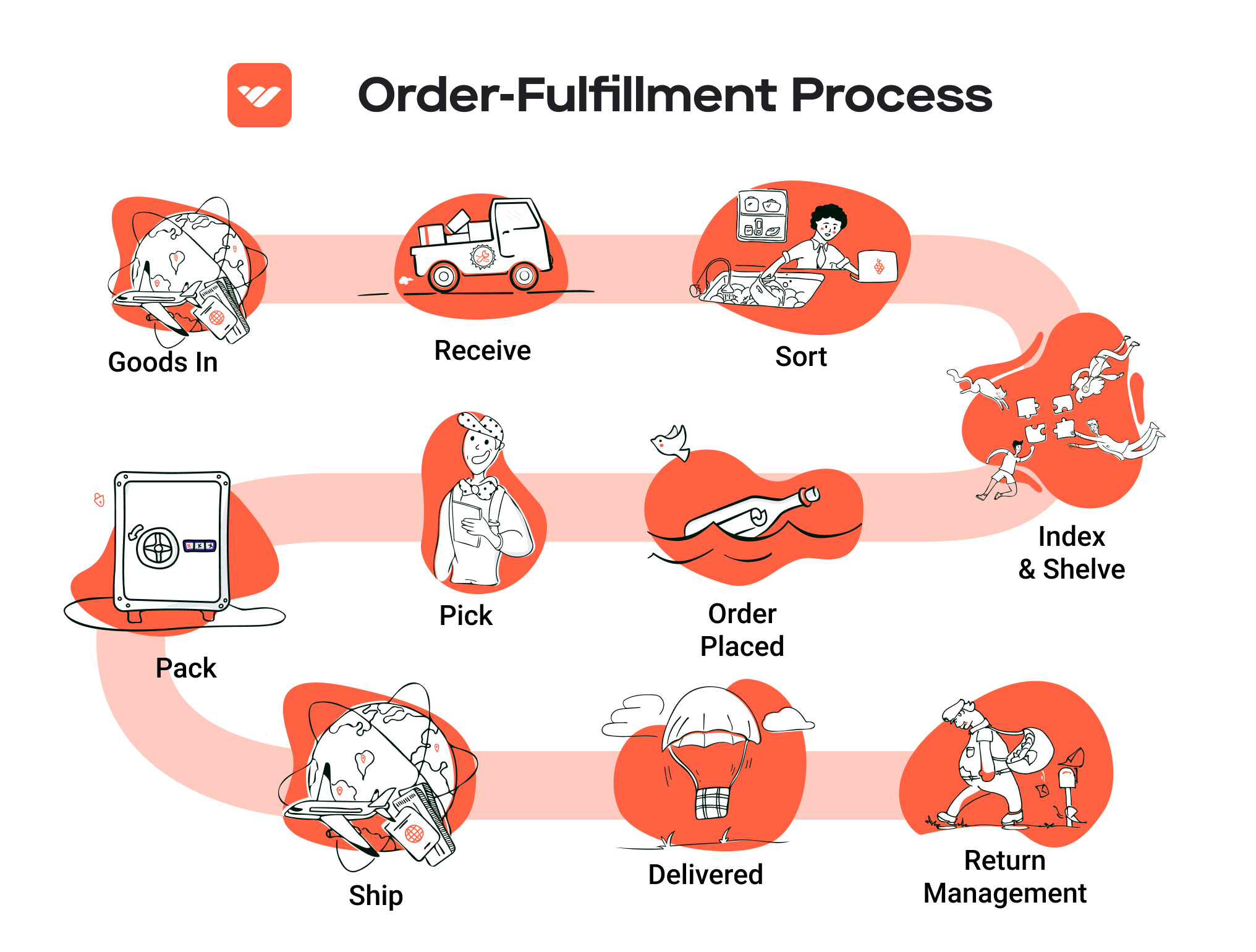
-
Customer Service and Returns: Amazon handles all customer inquiries and manages returns, providing a seamless experience for both sellers and buyers.
Pros of FBA
-
Prime Eligibility: Products fulfilled by Amazon are eligible for Amazon Prime, which is a significant advantage. Prime members often prefer products that offer fast, free shipping, increasing the likelihood of purchase.
-
Customer Trust: Selling through Amazon’s platform provides an inherent level of trust. Customers are more likely to purchase from sellers using FBA due to Amazon’s reputation for customer service and reliability.
-
Multi-Channel Fulfillment: FBA can also handle orders from other sales channels, such as eBay or a seller’s own website. This means sellers can centralize their inventory management and logistics through Amazon, simplifying operations.
-
Scalability: FBA allows sellers to scale their businesses without the need for significant investments in warehousing and logistics. Amazon’s infrastructure can handle increased order volumes, especially during peak seasons.
-
Time Savings: By outsourcing fulfillment, sellers can focus on other aspects of their business, such as marketing and product development, rather than spending time on order processing and shipping.
Cons of FBA
-
High Fees: While FBA can streamline operations, it comes with costs that can eat into profit margins. These include storage fees, fulfillment fees, and additional costs for long-term storage of unsold goods.
-
Strict Inventory Rules: Amazon has stringent policies regarding inventory management, including guidelines on labeling, packaging, and storage. Sellers must adhere to these rules to avoid penalties or removal of their listings.
-
Commingling Risks: FBA products may be commingled with other sellers’ inventory, which can lead to issues. If a customer receives a defective or counterfeit item, it could negatively impact the original seller’s reputation, even if they were not at fault.
-
Limited Control: Sellers have less control over the fulfillment process compared to managing their own logistics. This can lead to challenges in handling customer service issues or specific shipping requests.
-
Dependency on Amazon: Relying on FBA means that sellers are subject to Amazon’s policies and changes. This can create uncertainty, as any changes in fees or fulfillment processes can directly impact the seller’s business.
Who is FBA Best For?
FBA is particularly beneficial for:
-
Small to Medium-Sized Businesses: Businesses that lack the resources to manage their own warehousing and logistics can leverage FBA to compete on a larger scale.
-
New Sellers: Those new to e-commerce can benefit from Amazon’s established infrastructure and customer trust, allowing them to focus on building their brand without worrying about logistics.
-
High-Volume Sellers: Businesses with a large number of sales can take advantage of FBA’s efficient logistics and scalability, especially during peak shopping seasons.
-
Sellers with Diverse Product Lines: Companies offering a variety of products can utilize FBA to manage inventory across different categories without the overhead of multiple warehouses.
-
Brands Looking to Expand: Companies aiming to reach a broader audience can leverage FBA to tap into Amazon’s vast customer base, particularly in international markets.
In conclusion, while Fulfillment by Amazon offers significant advantages for e-commerce businesses, it also presents challenges that need to be carefully considered. By weighing the pros and cons, sellers can make informed decisions about whether FBA aligns with their business goals and operational capabilities.
Core Services Offered by Fulfillment Centers
Inventory Management & Warehousing
Fulfillment centers provide a critical service through inventory management and warehousing. This involves storing goods in a controlled environment where they can be easily accessed and managed. Advanced inventory management systems are often employed, utilizing software that tracks inventory levels, orders, sales, and deliveries in real time. These systems ensure that businesses maintain optimal stock levels, preventing both overstocking and stockouts.
The benefits of effective inventory management for e-commerce businesses are substantial. It enhances operational efficiency by automating stock replenishment and minimizing the likelihood of human error in tracking inventory. Additionally, real-time data analytics allow businesses to forecast demand accurately, enabling them to make informed purchasing decisions. This proactive approach not only reduces carrying costs associated with excess inventory but also boosts customer satisfaction by ensuring that popular products are always available for immediate shipment.
Pick and Pack Services
Pick and pack services form the backbone of fulfillment operations. This process includes picking items from the warehouse shelves based on customer orders and packing them securely for shipment. Fulfillment centers utilize various technologies, including barcode scanners and automated picking systems, to streamline this process, ensuring speed and accuracy.
The primary advantage of pick and pack services is the acceleration of order processing times. For e-commerce businesses, swift fulfillment is crucial in meeting customer expectations for fast delivery, especially in a competitive landscape where consumers often expect same-day or next-day shipping. Furthermore, fulfillment centers can handle a wide variety of products, from small items to bulky goods, allowing businesses to scale their operations without investing in additional labor or infrastructure. This flexibility can significantly enhance the customer experience and drive repeat business.
Kitting and Assembly
Kitting and assembly services involve the grouping of individual products into a single package or kit, often tailored to specific customer orders or promotional campaigns. This can include assembling components into a finished product or bundling complementary items together. Fulfillment centers often have specialized teams and equipment to manage these processes efficiently.
The benefits of kitting and assembly for e-commerce businesses are multifaceted. Firstly, this service allows businesses to offer customized products or gift sets, which can enhance the perceived value and appeal to customers. Moreover, it can lead to cost savings by reducing the time and labor required for assembly in-house. By outsourcing this function, businesses can focus on core activities like marketing and customer service while leaving the logistics to the fulfillment center. Additionally, kitting can streamline shipping processes, as multiple items can be shipped as one unit, reducing packaging waste and shipping costs.
Returns Management (Reverse Logistics)
Returns management, or reverse logistics, is a vital service offered by fulfillment centers that deals with the handling of returned products. This includes processing returns, inspecting items, restocking inventory, and managing exchanges or refunds. An effective returns management system is crucial for maintaining customer satisfaction and loyalty in the e-commerce sector.
The benefits of a robust returns management process are significant. A streamlined return process can enhance the overall customer experience, as easy returns are often a deciding factor for consumers when choosing where to shop. Fulfillment centers can handle returns more efficiently than many e-commerce businesses could manage in-house, ensuring that products are quickly processed and restocked. Additionally, by analyzing return data, businesses can gain insights into product quality and customer preferences, enabling them to make necessary adjustments to their offerings. This proactive approach to returns can mitigate losses and improve future sales strategies.
Conclusion
In summary, fulfillment centers offer a suite of core services that are essential for scaling e-commerce operations. From efficient inventory management and swift pick and pack services to specialized kitting and effective returns management, these services empower businesses to streamline their logistics and enhance customer satisfaction. By leveraging the capabilities of fulfillment centers, e-commerce entrepreneurs can focus on growth and innovation, confident that their logistics needs are being handled by experts in the field.
How to Choose a Fulfillment Partner: A 6-Point Checklist
Location & Warehouse Network
Importance:
The location of a fulfillment partner’s warehouses can significantly impact shipping times and costs. A partner with strategically placed facilities can reduce transit times to customers, enhancing satisfaction and potentially increasing sales.
Questions to Ask:
– Where are your warehouses located, and how do they align with our target customer demographics?
– How many facilities do you operate, and what is the total storage capacity?
– Do you have plans for future expansions or additional locations?
– How do you handle regional shipping challenges, such as traffic or natural disasters?
Technology & Integrations
Importance:
A modern fulfillment partner should utilize advanced technology to streamline operations, track inventory, and provide real-time data. The ability to integrate with your existing e-commerce platforms is crucial for seamless order processing.
Questions to Ask:
– What technology do you use for inventory management and order tracking?
– Can your system integrate with our current e-commerce platform (e.g., Shopify, Amazon, WooCommerce)?
– Do you provide APIs for custom integrations?
– How do you ensure data security and privacy for our customer information?
Specializations (e.g., Cold Storage, Oversized Items)
Importance:
Different businesses have unique needs based on their product types. A fulfillment partner that specializes in certain areas (like cold storage for perishables or handling oversized items) can provide better service and reduce the risk of damage.
Questions to Ask:
– What types of products do you specialize in handling?
– Do you have facilities equipped for temperature-sensitive products or bulky items?
– What protocols do you have in place for managing specialized inventory?
– Can you accommodate seasonal fluctuations in product demand?
Scalability & Capacity
Importance:
As your business grows, your fulfillment needs will change. It’s essential to partner with a fulfillment center that can scale operations to match your growth trajectory, ensuring you can meet customer demand without disruption.
Questions to Ask:
– How do you manage capacity during peak seasons (e.g., holidays)?
– What is your process for scaling operations if we experience rapid growth?
– Can you provide examples of how you have supported clients in scaling their logistics?
– What is your maximum capacity, and how do you plan to expand it in the future?
Pricing and Contracts
Importance:
Understanding the pricing structure and contract terms is vital for budgeting and cost management. Transparent pricing ensures there are no hidden fees that could impact your margins.
Questions to Ask:
– What is your pricing model (e.g., per order, per item, flat fee)?
– Are there any additional fees for services such as returns, storage, or special handling?
– What is the length of your standard contract, and what are the terms for termination?
– Do you offer volume discounts or flexible pricing based on sales performance?
Customer Support & Reviews
Importance:
Reliable customer support is critical for resolving issues quickly and maintaining smooth operations. Additionally, reviews and testimonials can provide insights into the partner’s reliability and service quality.
Questions to Ask:
– What customer support options do you offer (e.g., phone, email, chat)?
– What are your average response times for support inquiries?
– Can you provide references or case studies from similar businesses?
– How do you handle disputes or service failures?
Conclusion
Choosing the right fulfillment partner is a foundational decision that can significantly impact your e-commerce business’s success. By carefully evaluating potential partners using this checklist, you can ensure that you select a fulfillment provider that aligns with your operational needs, supports your growth, and enhances your customer experience. Take the time to ask the right questions, and don’t hesitate to seek out partners who can demonstrate their capabilities and commitment to your business’s success.
Understanding Fulfillment Pricing: A Breakdown of Common Fees
Initial Setup Fees
Initial setup fees are the costs associated with onboarding your business to a fulfillment center. These fees can vary significantly depending on the provider and the complexity of your operations. Typically, initial setup costs cover account creation, integration with your e-commerce platform, and the configuration of your inventory management system.
Calculation: These fees are usually a one-time charge and can range from a few hundred to several thousand dollars. Factors influencing the cost include the number of SKUs you plan to manage, the complexity of your inventory (e.g., perishables vs. non-perishables), and any additional services such as branding or special packaging requirements.
Receiving Fees
Receiving fees are charged for the process of accepting and logging your inventory into the fulfillment center. This includes the time taken to unload goods, verify quantities, and inspect for damage.
Calculation: These fees are often calculated per shipment or per pallet received. For example, a fulfillment center might charge $25 per pallet or a flat fee of $100 for each incoming shipment. The total cost can be influenced by the volume of products being sent and the efficiency of the receiving process.
Storage Fees (per pallet/bin)
Storage fees are applied for the space your inventory occupies within the fulfillment center. This is a recurring fee that can be charged monthly or quarterly, depending on the provider.
Calculation: Storage fees are typically calculated on a per pallet or per bin basis. For instance, a fulfillment center may charge $15 per pallet per month. This means if you have 10 pallets stored, your monthly storage fee would be $150. Some providers also offer tiered pricing, where the cost per pallet decreases as you store more.
Pick & Pack Fees (per item/order)
Pick and pack fees cover the costs associated with selecting items from storage and preparing them for shipment. This is a critical component of the fulfillment process, as it directly impacts order accuracy and delivery times.
Calculation: These fees can be structured in several ways: per item, per order, or a combination of both. For example, a provider may charge $1.50 per item picked and packed, or a flat fee of $3.00 per order, regardless of the number of items. The method of calculation can significantly affect your overall fulfillment costs, especially if you have a wide variety of products.
Shipping Fees
Shipping fees encompass the costs of transporting the packaged orders to the customers. This is often one of the most variable components of fulfillment pricing, influenced by factors like destination, package weight, and shipping speed.
Calculation: Shipping fees are generally calculated based on weight and dimensions, as well as the chosen shipping method (e.g., standard, expedited). Fulfillment centers may have negotiated rates with carriers, which can provide cost savings compared to retail shipping rates. Additionally, some providers offer flat-rate shipping options, which can simplify budgeting.
Tips for Getting an Accurate Quote
-
Provide Detailed Information: When requesting a quote, be as specific as possible about your product types, expected order volumes, and any special handling requirements. This helps the fulfillment center give you an accurate estimate.
-
Understand Your Needs: Consider your business model and how it affects fulfillment. For example, if you have a high SKU count, your initial setup and pick & pack fees might be higher.
-
Ask About Discounts: Inquire if the fulfillment center offers discounts for larger volumes or long-term contracts. These can significantly reduce your overall costs.
-
Compare Multiple Providers: Don’t settle for the first quote you receive. Comparing multiple fulfillment centers can help you identify the best pricing model for your needs.
-
Review the Fine Print: Ensure you understand any additional fees or terms that may apply, such as penalties for storage overages or charges for returns.
By grasping these common fulfillment pricing models and following these tips, you can better manage your costs and make informed decisions as you scale your e-commerce operations.
Frequently Asked Questions (FAQs) about Fulfillment
1. What is the ORH3 fulfillment center?
The ORH3 fulfillment center is a state-of-the-art logistics facility operated by Amazon, located in Charlton, Massachusetts. Covering approximately 2.8 million square feet, it incorporates advanced robotics to streamline the fulfillment process, enabling the efficient handling of millions of items and thousands of customer orders daily.
2. How does the ORH3 fulfillment center enhance delivery efficiency?
The ORH3 center plays a crucial role in Amazon’s logistics network by strategically positioning itself closer to customers. This local approach reduces transit times and enhances delivery speed, ensuring a more responsive service, especially during peak shopping seasons.
3. What types of products are processed at the ORH3 fulfillment center?
The ORH3 facility processes a wide variety of products, including books, electronics, toys, and household items. With the capacity to store approximately 32 million items, it serves as a critical hub for fulfilling diverse customer needs.
4. How does automation influence operations at the ORH3 center?
Automation is integral to the ORH3 fulfillment center’s operations. It features hundreds of robots capable of lifting heavy items, reducing manual tasks, and increasing overall productivity. This technology allows employees to focus on more complex activities, enhancing efficiency and accuracy in order fulfillment.
5. What is the difference between a warehouse and a fulfillment center?
A warehouse primarily serves as a storage space for goods, focusing on inventory management and bulk storage. In contrast, a fulfillment center is designed specifically for order processing and shipping. Fulfillment centers manage inventory with the goal of quick order turnaround, often utilizing advanced technology for efficient logistics operations.
6. What is a 3PL (Third-Party Logistics)?
A 3PL, or Third-Party Logistics provider, is a company that offers outsourced logistics services, including warehousing, fulfillment, and transportation. Businesses often partner with 3PLs to enhance their supply chain efficiency, reduce costs, and focus on core operations without the burden of managing logistics in-house.
7. How much do fulfillment services cost?
The cost of fulfillment services can vary widely based on factors such as order volume, storage space required, and additional services like packing and shipping. Generally, businesses can expect to pay for storage fees, pick-and-pack fees, and shipping costs. It’s advisable to request quotes from multiple providers to find a solution that fits your budget and operational needs.
8. What job opportunities does the ORH3 fulfillment center create?
The ORH3 fulfillment center is expected to create over 1,000 local jobs once fully operational. These positions will span various roles, including warehouse associates, operations managers, and logistics coordinators, contributing to the local economy and providing employment opportunities in the region.
9. How does Amazon ensure community engagement with the ORH3 center?
Amazon has committed to monitoring traffic conditions and collaborating with local authorities to manage any potential impacts from the fulfillment center’s operations. This includes implementing measures to ease congestion and ensuring that their logistics operations align with community interests.
10. What should businesses consider when choosing a fulfillment partner?
When selecting a fulfillment partner, businesses should assess factors such as location, technology capabilities, scalability, pricing structure, and customer service. It’s crucial to choose a partner that aligns with your operational goals and can adapt to changing demands as your business grows.
Conclusion: Is Outsourcing Fulfillment the Right Move for Your Business?
Evaluating the Benefits of Outsourcing Fulfillment
Outsourcing fulfillment can be a transformative decision for e-commerce businesses aiming to scale efficiently. By leveraging the expertise of a specialized fulfillment partner, companies can save invaluable time and resources. Instead of managing logistics in-house, business owners can focus on core activities such as marketing and product development, enabling them to drive sales and enhance customer satisfaction.
Another significant advantage of outsourcing fulfillment is scalability. As your business grows, so do the complexities of order processing, inventory management, and shipping logistics. A dedicated fulfillment center, equipped with advanced technology and a trained workforce, can effortlessly adapt to fluctuating demand. For instance, the recent launch of Amazon’s ORH3 logistics center showcases how strategic investments in fulfillment infrastructure can significantly enhance operational efficiency, allowing businesses to meet customer demands swiftly during peak seasons.
Expertise is yet another critical factor. Fulfillment partners bring a wealth of industry knowledge and best practices, ensuring that your logistics operations run smoothly. They can navigate the intricacies of shipping regulations, optimize shipping routes, and manage inventory more effectively than most businesses could achieve independently.
However, the success of outsourcing fulfillment hinges on selecting the right partner. Conducting thorough research and aligning with a provider that understands your specific needs and growth objectives is essential. A misalignment can lead to operational bottlenecks and dissatisfied customers.
Call to Action
To determine if outsourcing fulfillment is the right step for your business, consider conducting an audit of your current shipping and logistics processes. Analyze your fulfillment costs, customer feedback, and operational efficiency. This evaluation can provide crucial insights into whether partnering with a fulfillment service could enhance your business’s scalability and customer satisfaction. Don’t hesitate to explore options that could propel your e-commerce success.
Important Disclaimer
⚠️ Important Disclaimer
The information in this guide is for educational purposes. Fulfillment services, pricing, and platform features change frequently. Always conduct your own due diligence and consult with providers directly before making business decisions.
